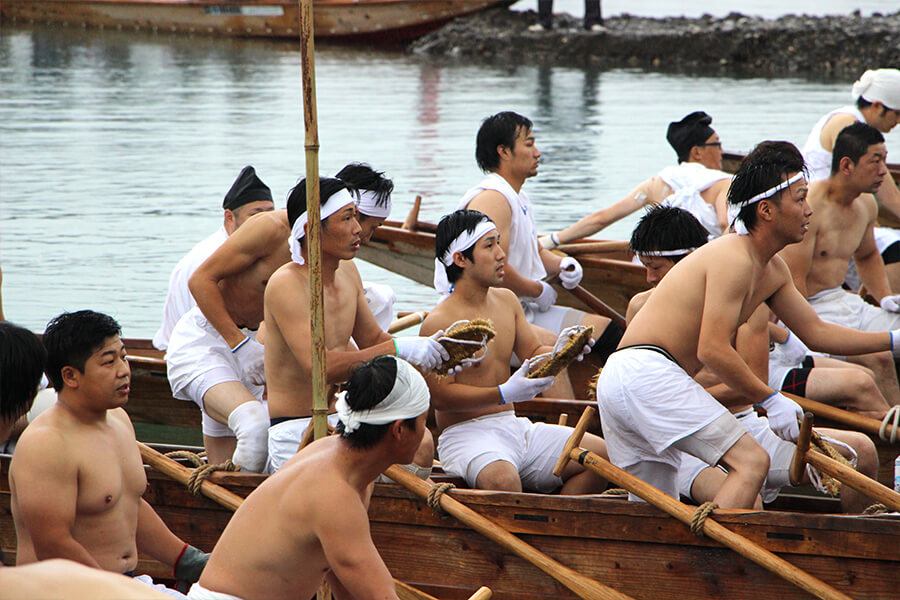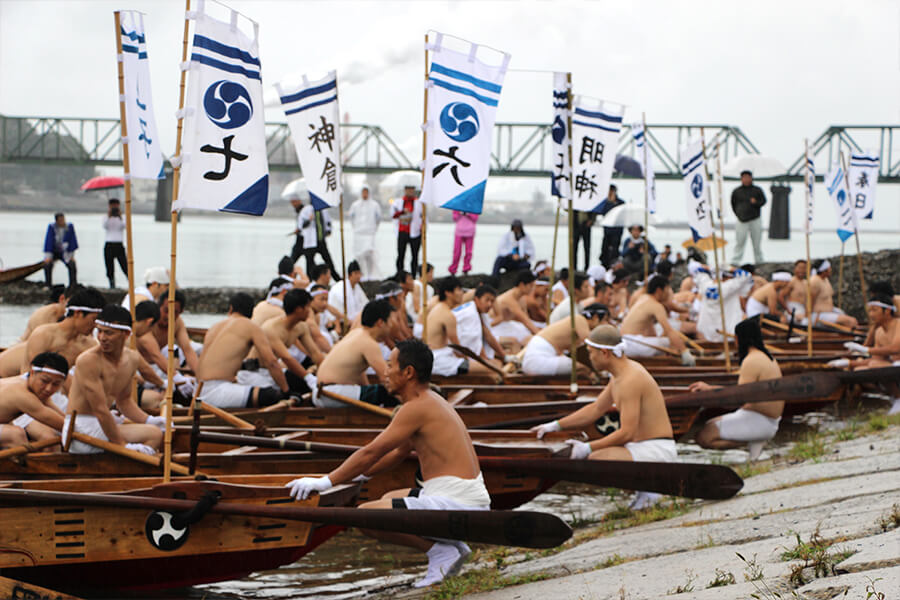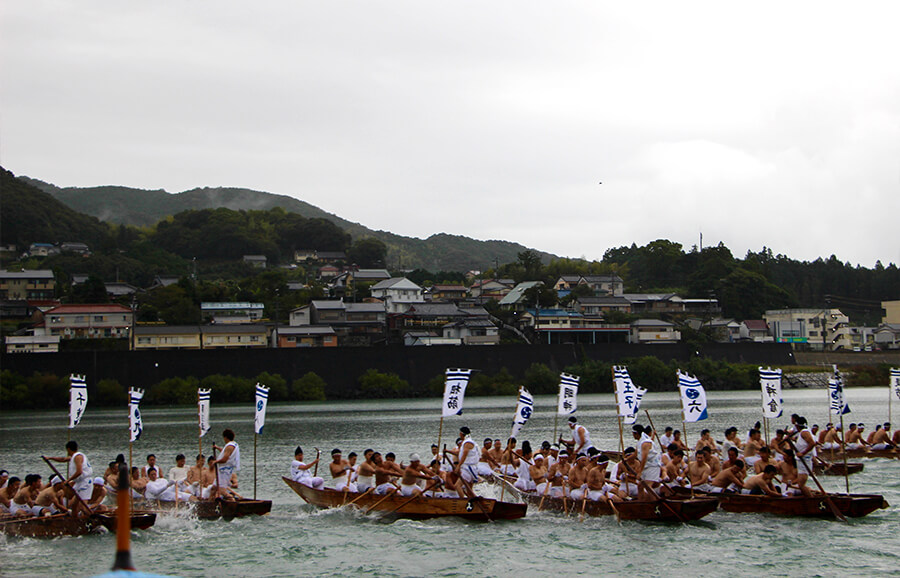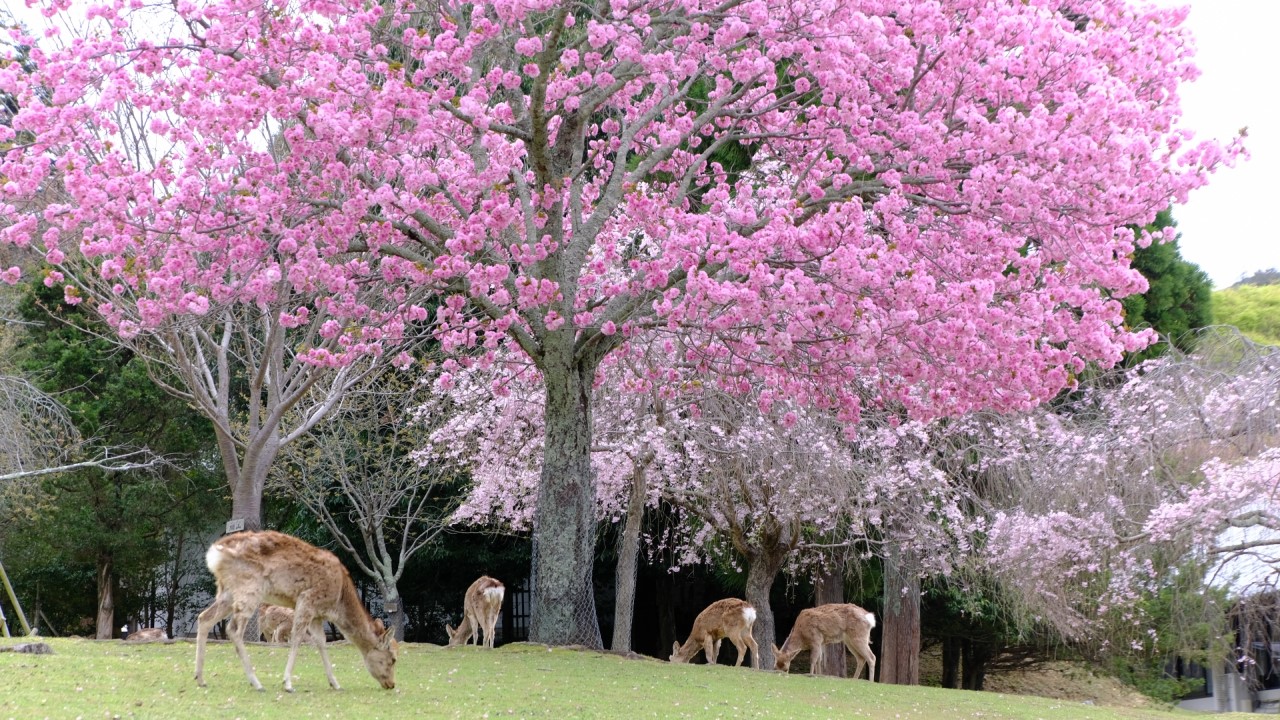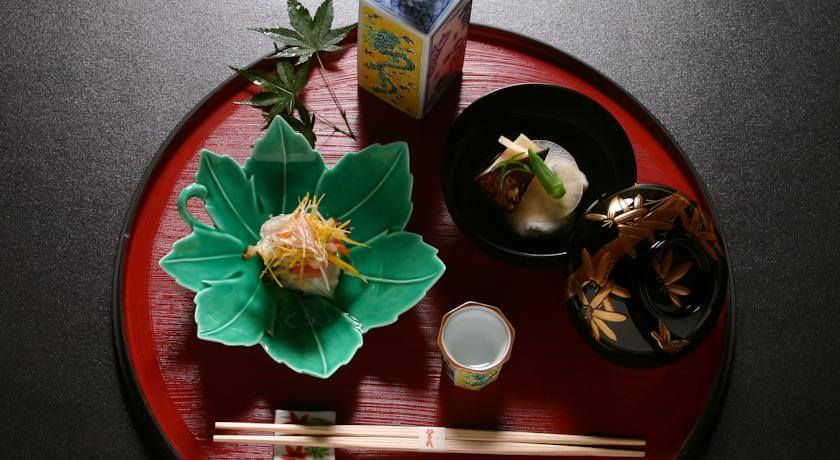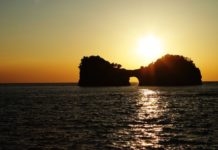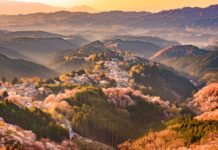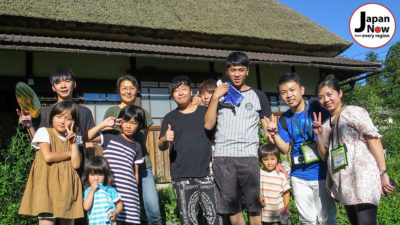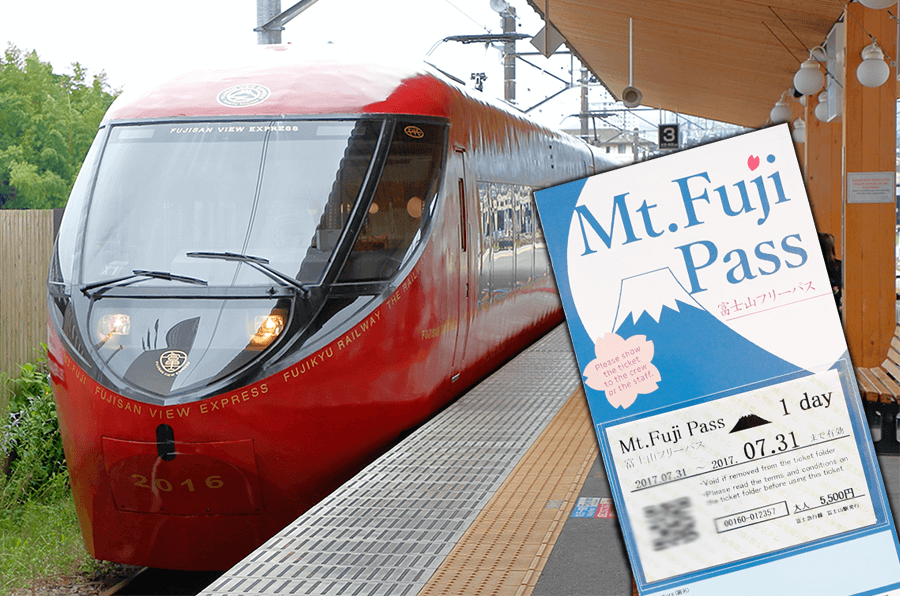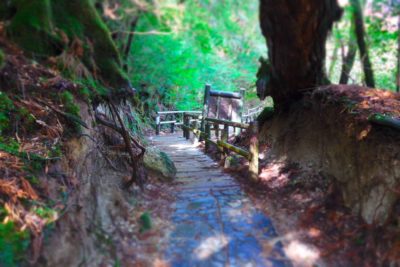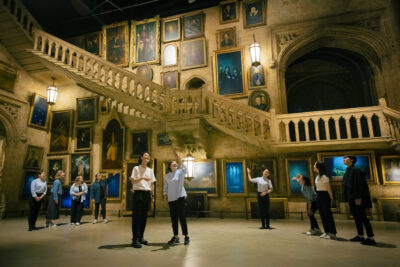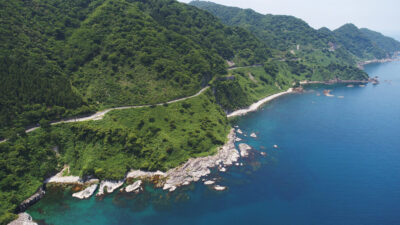By Rozemarije Zijlmans
It’s said that the Kumano gods first descended to earth at the gigantic white, greyish rock that sticks out of the Gongenyama mountain. From this sacred spot, marked by the small red Kamikura Shrine, they set forth and dispersed into the region.
Follow the footprints of Gods
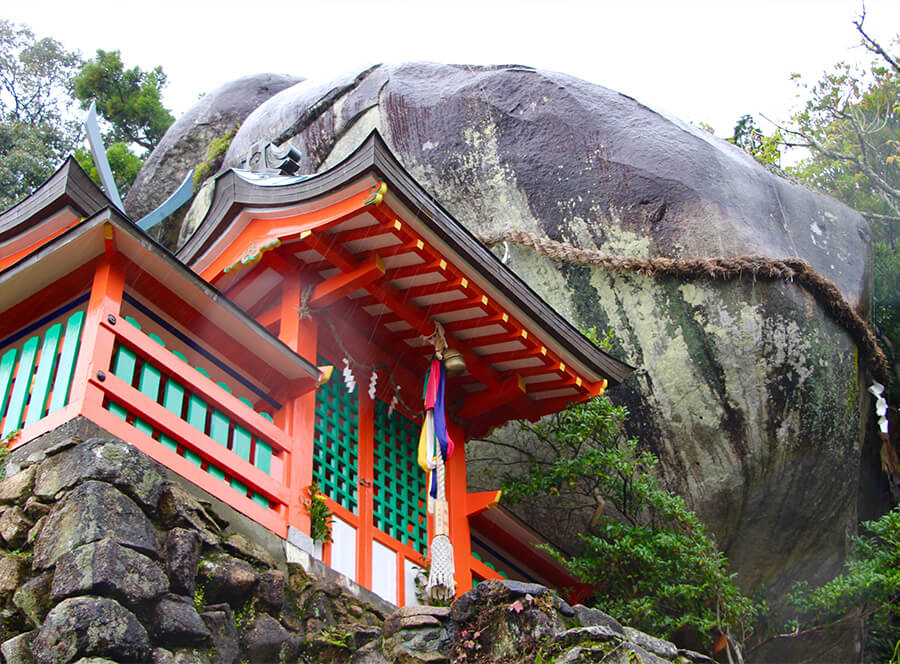
Located at the foot of the mountain is the town of Shingu, our destination for the next two days and home to several sacred sites. It soon becomes obvious that the Gods have left their footprints everywhere around here.
Shingu (39,000 inhabitants) is situated in a mountainous area with plenty of rivers. It is the centre of the Kumano faith, which worships nature (rocks, trees, waterfalls, etc.) and combines Shinto religion with Buddhism. The faith was unique as it was open to everyone, including women and non-believers. As a result, it spread rapidly throughout Japan.
The Kumano gods were worshipped at three important temples (Grand Shrines) that together are called the Kumano-sanzan. From the ninth century, the imperial court and the aristocracy visited these religious sites, followed by the samurai and later, commoners. A popular pilgrimage route came into being: the Kumano Kodo.
In 2004 the Kumano Kodo and the Kumano-sanzan were designated as a UNESCO World Heritage Site, an honor also given to another pilgrimage route, the Santiago de Compostela in Spain.
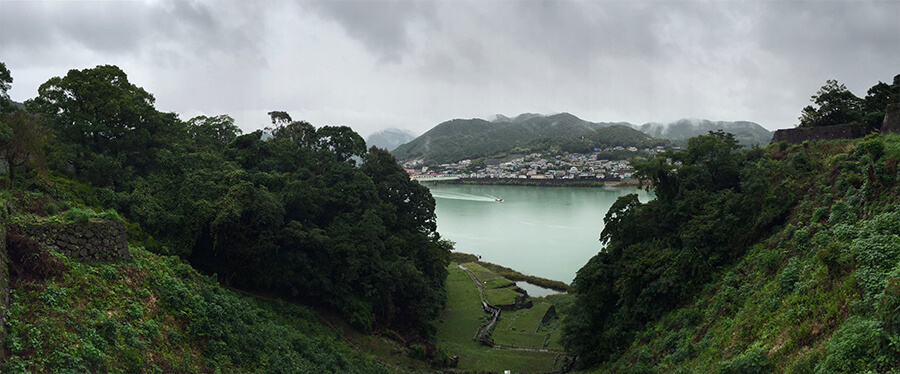
The annual festival of the Hayatama Taisha Grand Shrine
It’s pouring rain the day we arrive at Shingu. This doesn’t seem to bother the dozens of men with bare upper bodies, clad only in white trousers. They snort while sliding back and forth in their wooden rowing boats on the banks of the dark green Kumano-gawa river. With their eyes squeezed, they spy their opponents. Today is the annual festival of the Hayatama Taisha Grand Shrine, one of the three Kumano Grand Shrines. The festival ends with the Mifune boat race that every single boat aspires to win.
After the starting shot, roaring men push off the boats; the sound of gushing river water, hitting the prows. Within seconds the battle on the water is in full swing. They must make three rounds around a small island in the river. A crowd of spectators rushes by car or on foot towards the finishing point.
It has become quiet and a small boat appears on the river. It carries the red and gold portable shrine (mikoshi) bearing the divine spirit of the temple. Calmly the boat makes a couple of rounds around the island before it anchors.
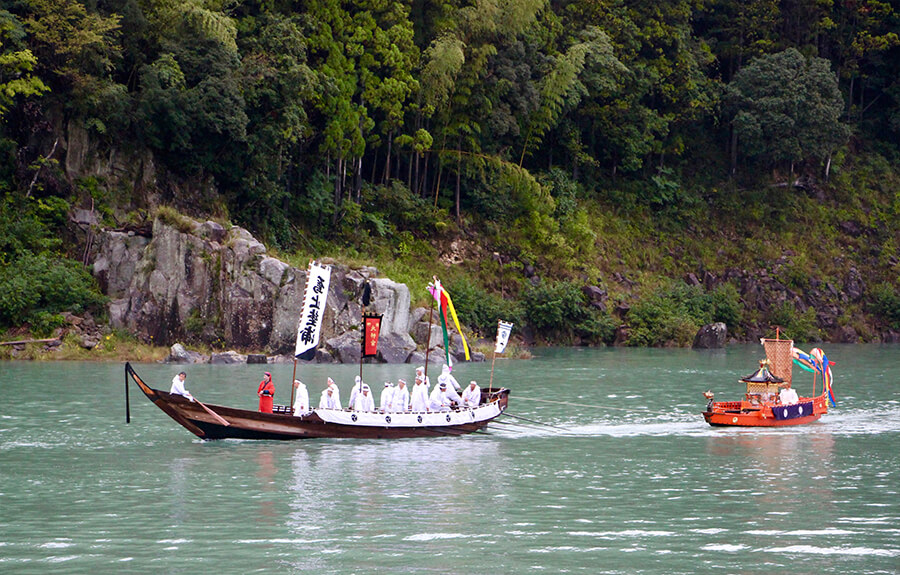
In the twilight, the mikoshi is carried to an open space surrounded by trees and filled with people dressed in white. A solemn ritual is conducted; full of mantras, crackling fire and burning incense, all dedicated to the gods of the Kumano Hayatama Grand Shrine.
Passing by the shrine earlier that day, we purified the sins of our previous lives. And while I am listening to the humming priest, for a moment, this place feels truly divine.
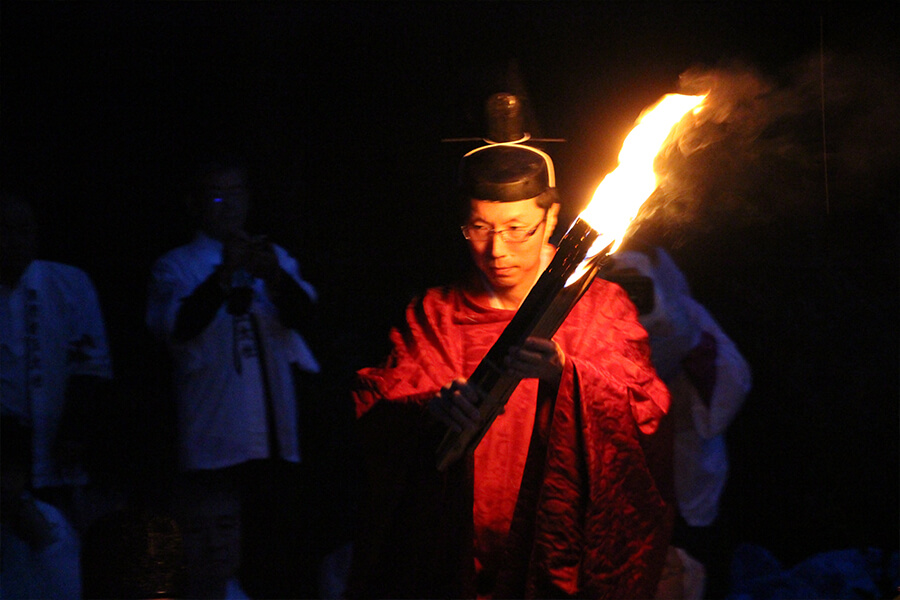
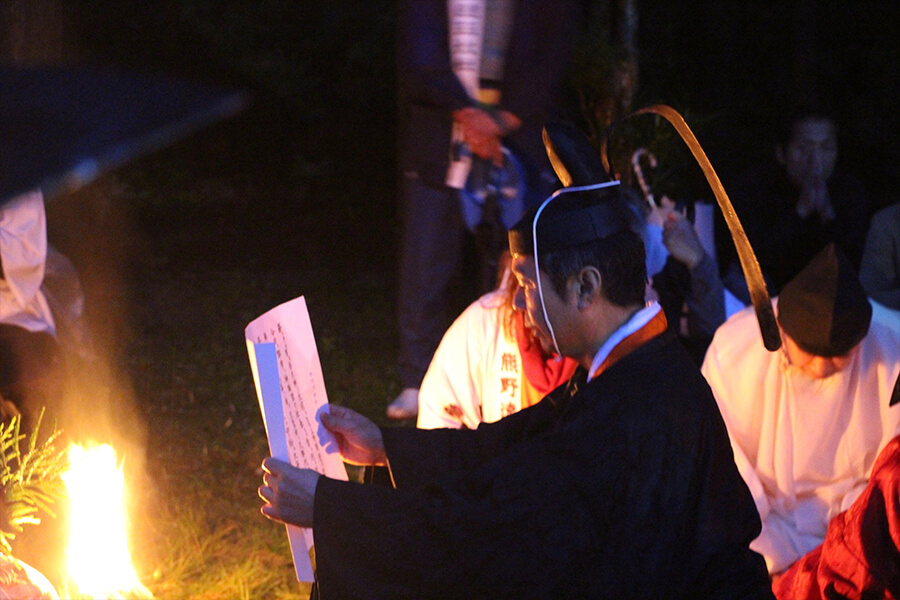
When visiting the other two Grand Shrines, one can attain the grace of the gods in their present life at the Kumano Nachi Taisha Grand Shrine, and find salvation for future lives at the Kumano Hongu Taisha Grand Shrine. And when this circuit has been completed, all sins are forgiven and passage to heaven is ensured. How wonderful!
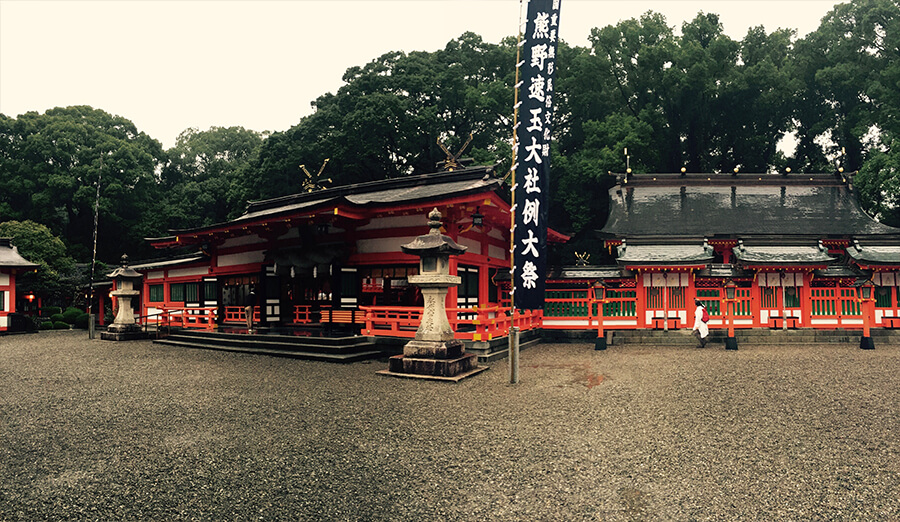
But not for us; not yet. We still have too many items on our Shingu to-do-list. The second morning we take the opportunity to have a closer look at the giant rock Gotobiki-iwa. Our cordial, aged guide takes us for a steep climb via stairs that are carved out of the mountain. It’s cold, slippery and when we reach the top we’re trembling.
But we are rewarded with a fabulous view. It stretches beyond the city, glimmers across the water, towards the East, where the sun rises. Where the very first sun of the new year rises and that is reason enough for an annual celebration.
Every year, on February 6th, over 2,000 people crowd into this exceptional place. At the Kamikura Shrine a fire burns; a present of the gods. Torches are lit by the fire and after 15 minutes, the gate opens and everyone sprints forward. On bare feet or wearing straw sandals, they storm down all 538 uneven steps as fast as they can. The first one downstairs gets a prize.
However, it wasn’t always like this, originally, the burning torch was carried into the village, towards the hearth in the kitchen of every home and the food that was prepared on these flames was the best meal to start the new year.
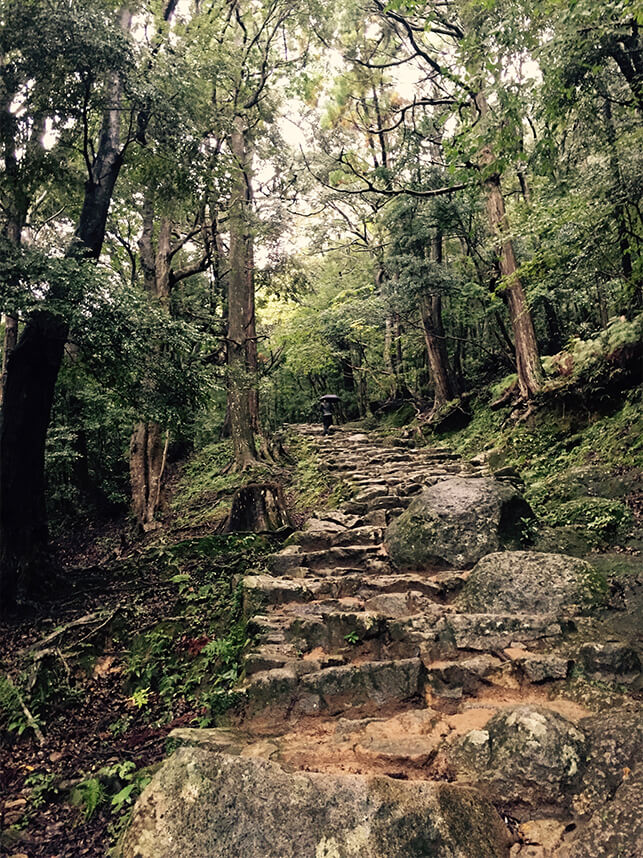
And speaking of meals, Shingu provides not only a spiritual experience – you can also attain a culinary nirvana at any of the wide range of restaurants located in the city. This is because the area was once an industrial hub, made prosperous through forestry (cedar and cypress lumber), whale hunting, and providing services for the many pilgrims who visited. In addition, Shingu was home to many writers and intellectuals, who loved to debate over an excellent meal.
Here is just a taste of the many special places we visited. First, sushi at Jofuku-sushi. Be sure to try the fresh-caught tuna with the local citrus sanzu and salt, while in the charming restaurant Kaki no Ate, filled with Japanese antiques, you can taste chrysanthemum sushi wrapped in a persimmon leaf. For the oldest restaurant in town, head down to Shikaroku, where for over a hundred years, people have been tucking in the smoked eel, soft as butter, served with rice.
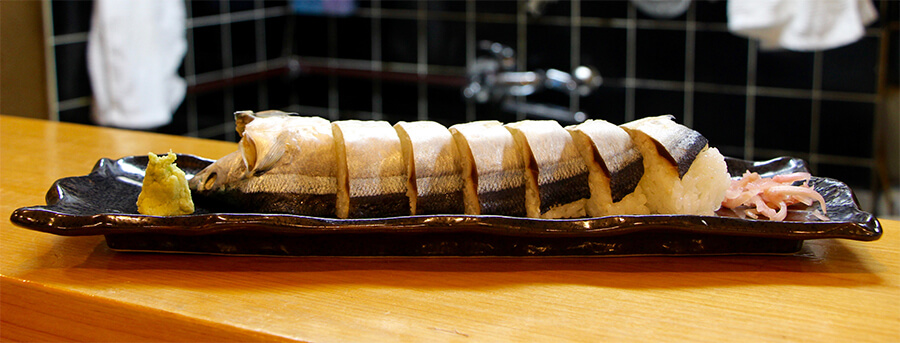
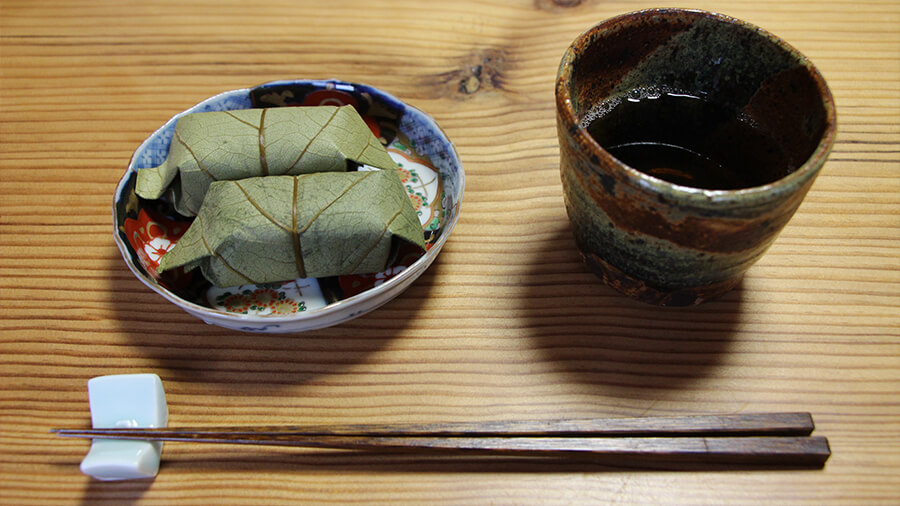
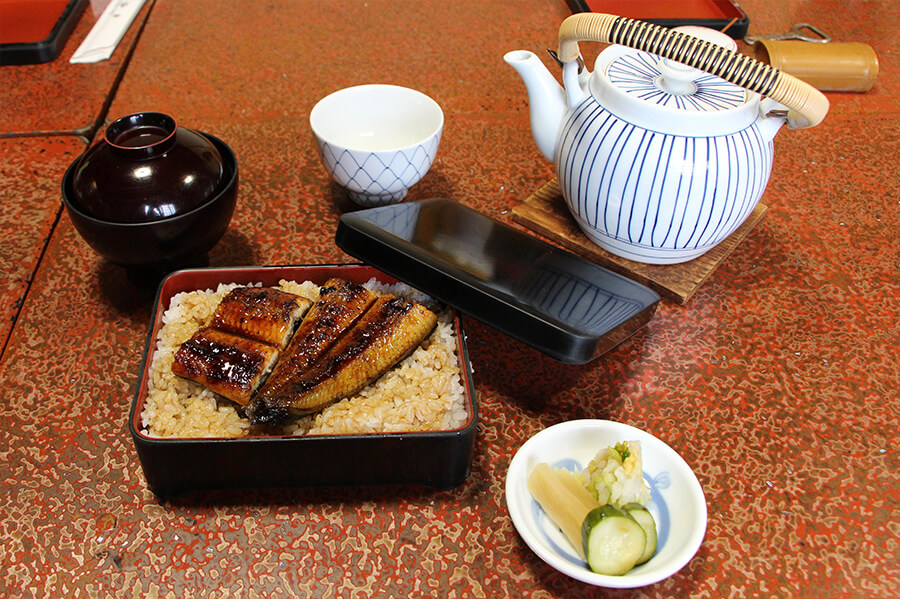
To end the feast, something completely different: shaved ice (kaki gori). Never before did I experience such delicious, feather-light shaved ice like the one at Naka-kooriten. In the summertime, this teeny tiny ice shop attracts over 500 customers a day. Don’t miss out on it.
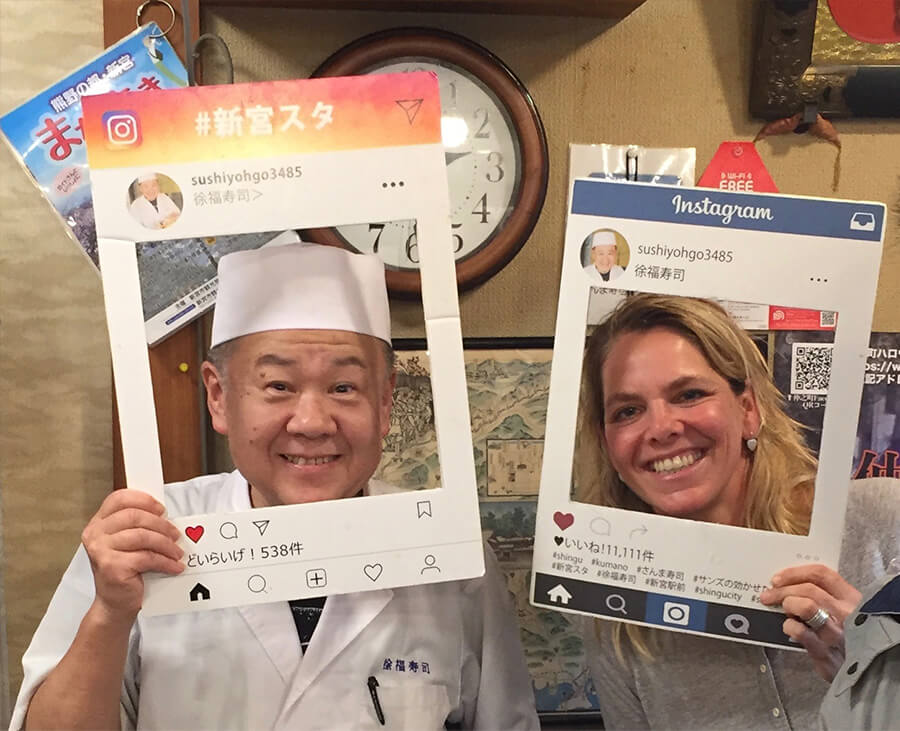
This was just a taste of all the wonderful food, impressive religious sites and breathtaking nature surrounding Shingu area, truly the land of the Gods.
WATTENTION NINJA WRITER PROFILE

In 2015 I gave up my job at an international airline to move to Tokyo and to start free-lance writing. Experiencing Japan is a present for life, that I would like to share with others. I hope that my article will be a little gift for you.
MORE ARTICLES BY THIS WRITER | ABOUT WATTENTION NINJA
 0
0

